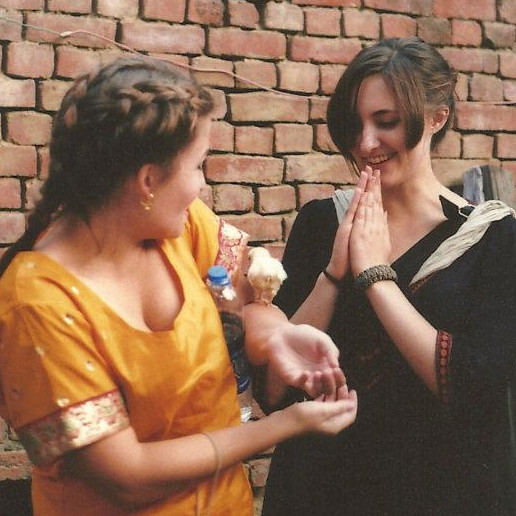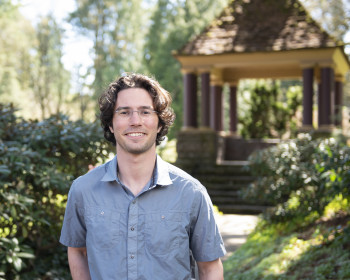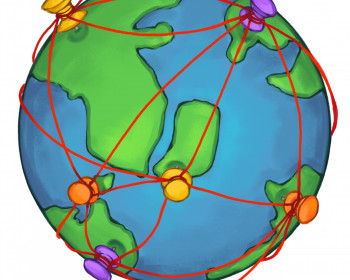Students earn grant to promote global peace
Open gallery

For the seventh year in a row, Lewis & Clark students have earned a competitive grant from philanthropist Kathryn W. Davis’s 100 Projects for Peace Initiative. Over the summer, students Miranda Benson ’13 and Hillary Patin ’14 will promote dance movement therapy and self-defense for women in Varanasi, India.
The grant program encourages undergraduate students to design grassroots projects to be undertaken around the world. Each year since the program’s inception, Lewis & Clark students have earned the coveted $10,000 grants to pursue projects addressing diverse challenges, including promoting youth engagement in Somalia, providing clean water in Ethiopia, and educating residents about human rights in Morocco.
Miranda Benson ’13
Major: Psychology
Hometown: Seattle, Washington
Hillary Patin ’14
Major: Economics
Hometown: El Paso, Texas
and Grass Valley, California
How did your group decide to focus on dance movement therapy and self-defense?
Benson: Rape in India is one of India’s most common crimes against women and affects women of all classes. Recent media coverage of the death of a 23-year-old New Delhi university student and protests like the SlutWalk led us to believe that now is an ideal time to address these issues with Indian women in a comfortable, safe, and engaging setting, laying the foundation for peace between genders.
Sexual harassment and assault can cause women to disconnect from their own bodies, disrupting a healthy integration of the mind and body. Teaching dance will foster playfulness, self-confidence, and positive relationships between women, thus reconnecting them with their own bodies, each other, and the outside world, promoting individual and communal peace among women. Dance movement therapy changes participants’ brain chemistry, resulting in strengthened confidence, self-perception, and chances for success. Our choreography will require the women to depend on each other and trust in themselves.
Patin: We chose to teach dance movement therapy and self-defense because we did not find them available during our previous travels in India. Many women’s groups focus on problems created by the patriarchal tendencies of India’s society, such as lack of financial independence for women. Instead, our program is focused on directly challenging the root of problems created for women by this structure, rather than focusing solely on its repercussions, by empowering women to take control of their lives and promoting peace by defending against sexual violence.
How did you select Varanasi for the site of your project?
Benson: Varanasi is a preindustrial city in northern India that has been a cultural hub for thousands of years. As a tourist destination and one of India’s most popular pilgrimage sites, implementing our project in Varanasi allows it to be advertised to a wide range of people. In addition, we spent three weeks collaborating with Nirman school in Varanasi, providing us with contacts and familiarity with the area.
How do you think your Lewis & Clark education has influenced your project?
Benson: Lewis & Clark’s dual focus on international awareness and gender issues provided us with a strong background for this project. We participated in the study abroad program in India, which contributed to our initial interest in the social group and geographic area we chose.
Patin: The interdisciplinary approach of Lewis & Clark’s liberal arts allowed us to make connections across a variety of academic departments. These connections and our experience on the study abroad trip inspired us to go back to India to give women the tools to further embrace the growing movement for Indian women’s rights.
More Newsroom Stories
Public Relations is located in McAfee on the Undergraduate Campus.
MSC: 19
email public@lclark.edu
voice 503-768-7970
Public Relations
Lewis & Clark
615 S. Palatine Hill Road MSC 19
Portland OR 97219

